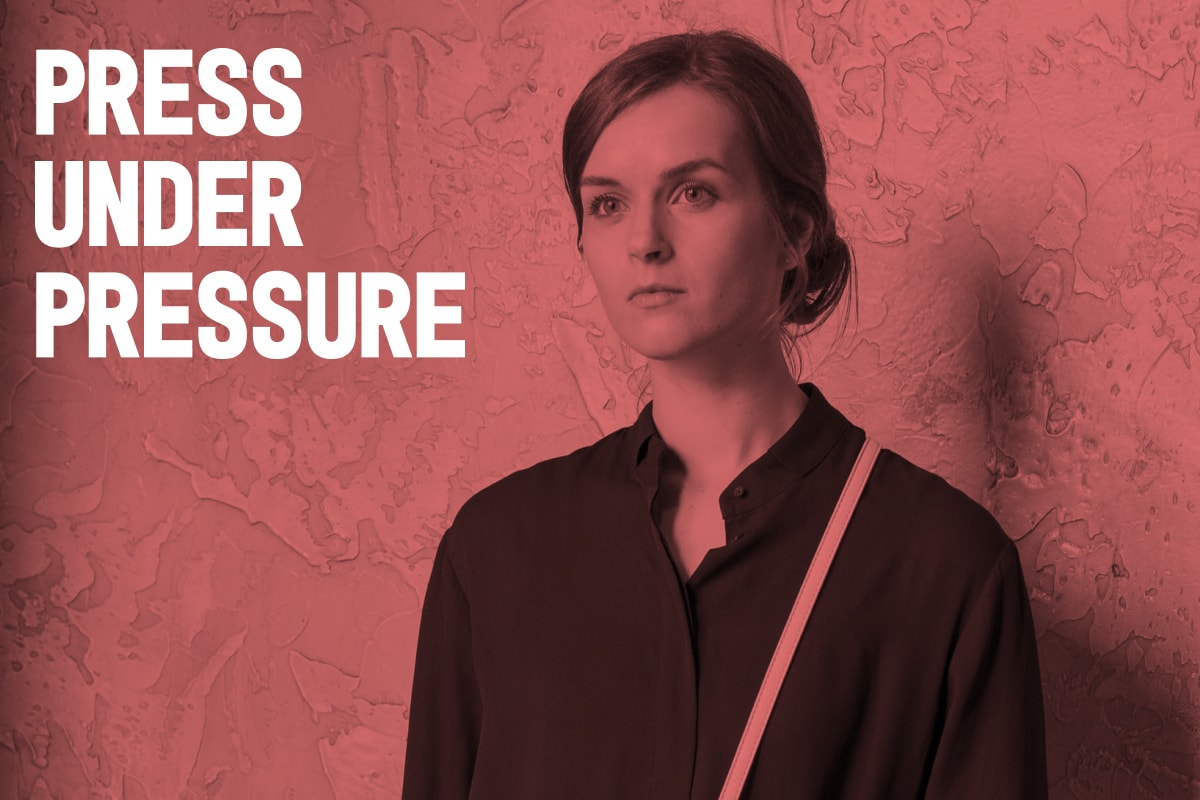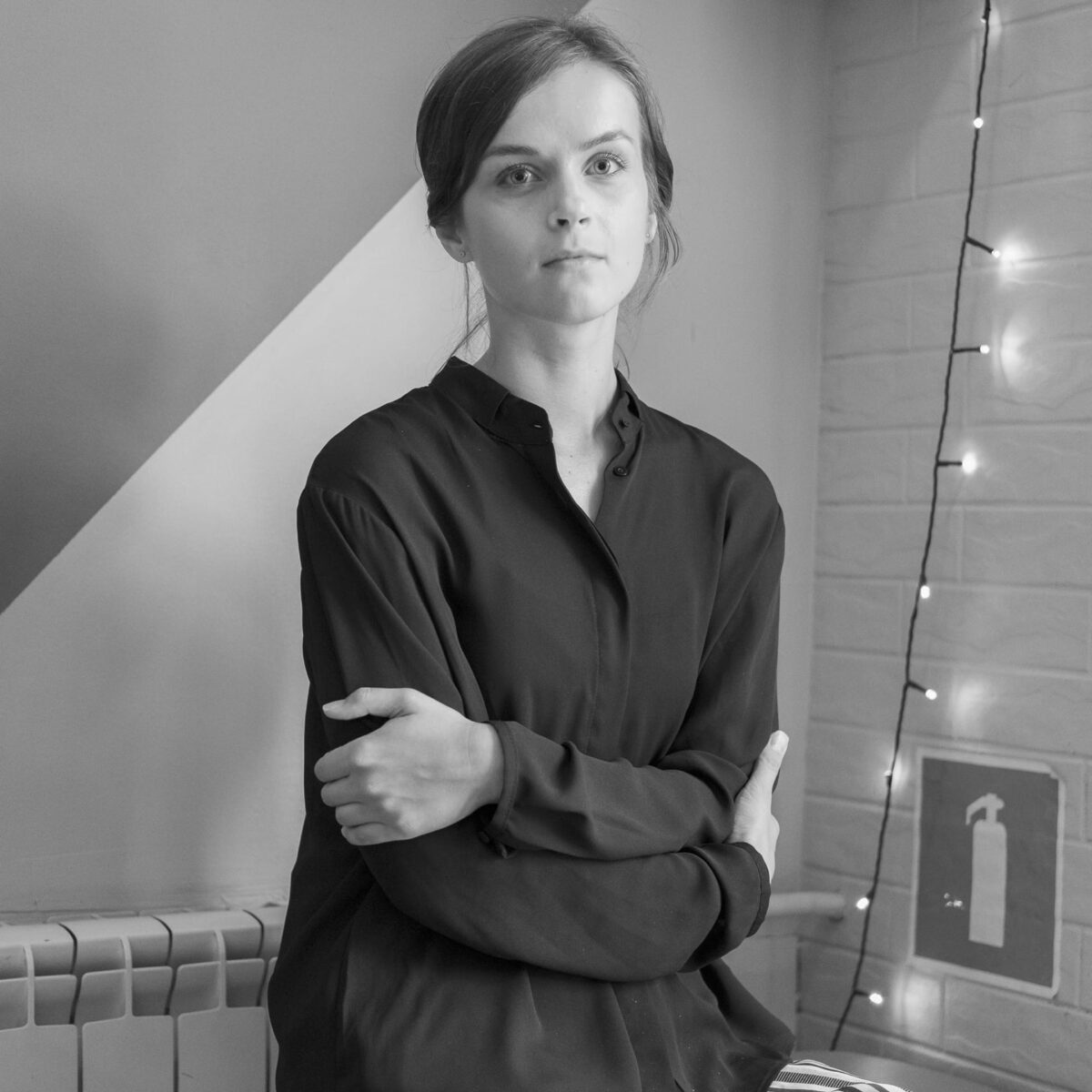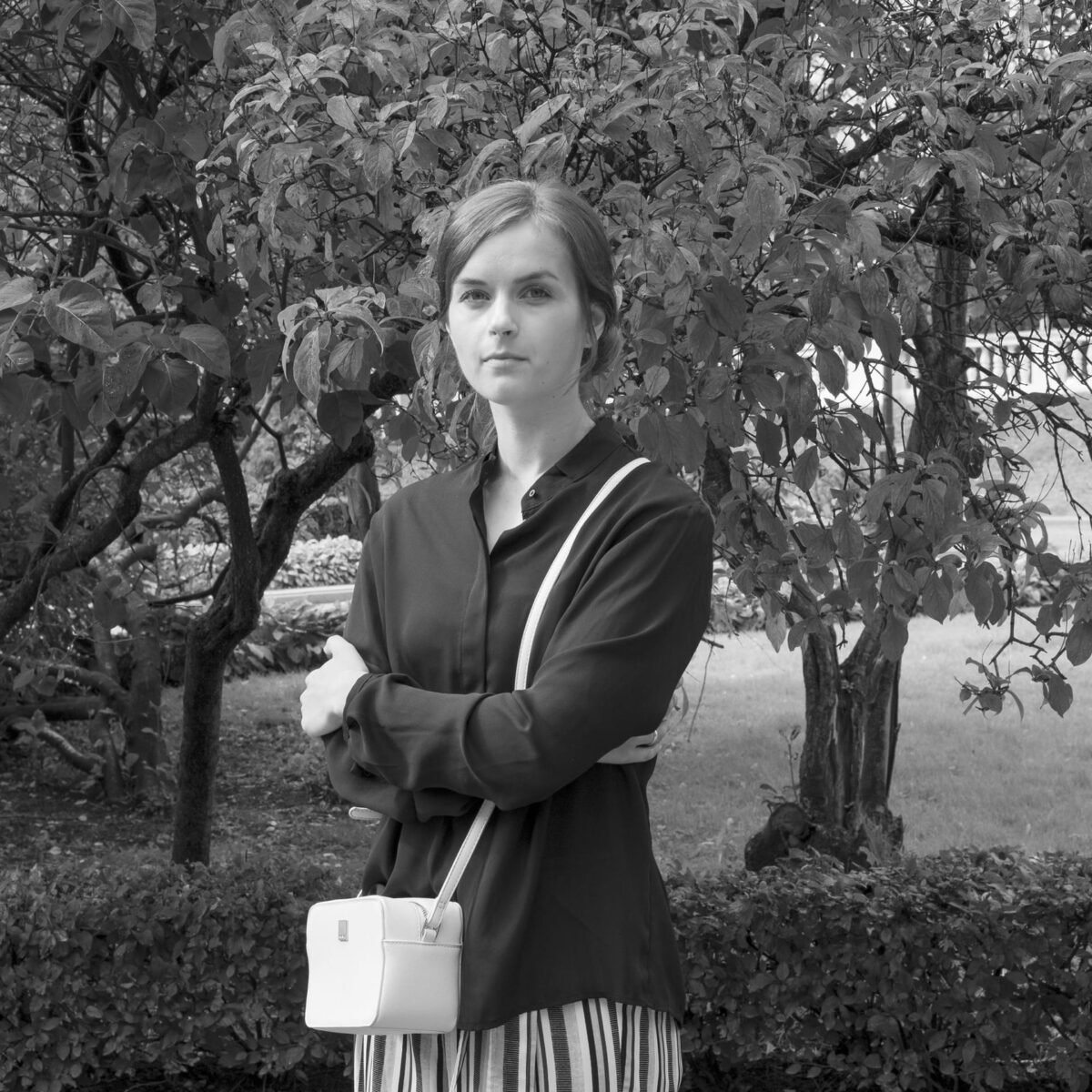
On August 10, 2020 Natalia Lubnevskaya covered the protest action on Kalvariyskaya Street in Minsk. She was identifiable by a blue “Press» vest. Despite this, a security officer wounded her at close range with a rubber bullet. Nasha Niva published a video where you can see the moment of Natalia’s injury.
On August 9, I was working at the protests, and breathed in a lot of the gas that was sprayed over the protesters. But there were no more incidents, and I returned home safe.
I had been sure I was lucky enough to avoid detention when covering the events. It seemed to me that the worst thing that could happen was detention for several hours or the inability to get to the scene physically and have enough time to do my job to deadline. Until August 10.
I remember my colleagues and myself discussing our action plan during the protests, including the safety guidelines. That rules seemed irrelevant to me: helmets, body armor, goggles. I was more worried about how to send data, because there would be no internet.
On August 10, we were spread across locations, and the photographer and I drove towards the Pushkinskaya metro station, but stopped at Kalvariyskaya Street. It was there that people gathered at that moment. Several hundred people came with posters “No to violence”, “We are peaceful people”, “Police = people”. The slogans the people shouted were also peaceful, “Long Live Belarus,” for example.
No aggression, no barricades. All of a sudden, a special forces detachment of several dozen people ran out of the courtyards. The protesters started running away, while the fighters fired bullets at their backs, and started throwing stun grenades in their direction, as far as I can tell. Although no one was offering resistance.

Natalia Lubnevskaya
At that moment, a group of journalists and I stood in the way of the protesters, rather than in the way of the special forces. Most of us wore blue Press vests, and we all had special badges. It was clearly visible that we were not participants in the event. However, unfortunately, that did not save us.
At some point we decided to leave. I was at the back and felt something burn my leg. I didn’t understand what had happened immediately. I did not see the moment of shooting. During the first few seconds, I did not understand it had been a bullet. I thought that some pebble had bounced off my leg. I was sure that someone was shooting from afar: by accident or on purpose I didn’t know.
But then I saw a video of the shooting. The man firing was standing ten meters away from me: he took aim, and decided that it was okay to shoot at an unarmed person who was at work who had neither threatened him with anything, nor even seen him.
On adrenaline, I ran across the pedestrian crossing, and then I noticed that my jeans were burned, a hole was punched in my leg, and blood was pouring out. The wound was close to the knee. I was scared to step on that leg so as not to worsen its condition. I started screaming that I had been wounded, I was bleeding, needed an ambulance, and could not walk. Fortunately, someone nearby had bandages, and I got my leg bandaged to stop the bleeding a bit.
It was almost impossible to call an ambulance, because some roads were blocked. I was taken to the hospital by people whose car was parked nearby. Thanks to them, I quickly got to the emergency hospital on Kizhevatova Street. As we drove, the bandage and jeans were soaked with blood.
The doctors in the admissions department were not prepared to see wounds like mine. I saw the widening eyes of the doctors on duty, young guys, as they unwrapped the bandage from my leg. I don’t think they had ever seen such a thing before. They called in a senior doctor to treat the wound.
The other protocol arrived as late as in an hour. The doctors said the procedure for treating gunshot wounds was completely different. Such a wound should not be sutured immediately, because some of the tissue could die off. The wound needed to be washed all the time, and the healing would take a long time – about a month. I was very lucky that the bullet had not hit any bones or ligaments, just the top layer of soft tissue. Very deep, though. Which was why the recovery period would be that long. I spent several weeks in a cast to help my leg heal better.
The first days in hospital were very tense: the protests continued in the streets, the early news came about what was happening in the Okrestina detention center, about how people were treated in the yards. I was very scared to read all that.
I felt incredible support both from my friends and family and from strangers. I felt I was not alone, that there were people ready to help, people were in solidarity with me. They texted and called. Volunteers came, brought hot meals, essentials. Psychologists and lawyers came to the hospital. In this way, those who needed help could get it.
During these days, two deputies [members of parliament] came. They asked how they could help. We suggested they recognize the vote rigging and make a statement that they were against the violence that was all over the streets. In response, they answered something like: “We are outranked people; what can we do?” There was no constructive conversation. It was a strange visit.

Natalia Lubnevskaya
I used to think that rubber bullets were those little yellow balls used at a shooting range. It turned out that these are fully-fledged live munitions. The only difference from ordinary bullets is that they are made of rubber. When I saw the damage such a bullet could inflict, I was shocked.
Moreover, the Ministry admitted they had used them against the protesters. It is completely incomprehensible to me how the Ministry of Internal Affairs could boast the day before that they had been using rubber bullets against the protesters. This admission of violence is completely astonishing and unacceptable to me.
I found the courage to look at my wound only a week after arriving at the hospital. I wouldn’t look at it at all, but the forensic expert didn’t come, and I didn’t want to be told later that my wound was a fake, that I had just a bruise on my leg. I thought that I must photograph the wound for a trial, if there was to be one. I was shocked to see what a huge and deep hole I had above my knee!
I was very worried that this happened in the first place, that no investigation was going on, that there was no apology, no admission of guilt from the police or other law enforcement agencies.
When I got wounded, I knew that the internet was not working well, and I thought my relatives would learn everything from me a bit later, when I would get home. I didn’t think it would take a month. I was sure that the wound would be washed, bandaged, and I would be allowed to go home. However, after a couple of minutes, my mother, husband, relatives were all calling me. The internet hadn’t provided much information about how exactly I was wounded and how serious it all was.
I didn’t say anything to my grandparents for several days so as not to worry them, but they learned everything on the square, in their village. The grandmother was in hysterics: she could not imagine that this was possible in Belarus, in the capital, in broad daylight.
I am very lucky to have such a family. They always support me in both word and deed. They understand my civic stance, and my attitude to the profession. Unfortunately, there are some relatives who look at the situation from a different perspective and think that rudeness and violence can be justified. This is very painful, and I do not yet see how to bridge this family divide. This is a moral issue rather than a political one.
However, the editorial office faces a fine for the untimely notification of government agencies of an accident at work. This case is unique. In addition, the editor-in-chief of the newspaper Yahor Martsinovich, who was supposed to have notified the authorities about the accident, was at that time detained by the security forces.
Terms and conditions
Partial or full reprint is permitted subject to following terms of use.
An active direct hyperlink to the original publication is required. The link must be placed in the header of the reprinted material, in the lead or the first paragraph.
Reprints, whether in full or in part, must not make changes to the text, titles, or copyrighted photographs.
When reprinting materials from this page, attribution must be given to the Press Club Belarus “Press under Pressure” project, collecting evidence of repression against independent media and journalists in Belarus.